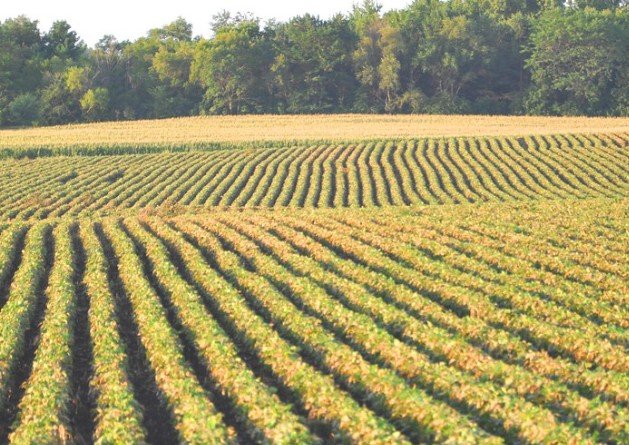Iowa State University researchers have uncovered significant environmental and yield benefits from planting soybeans earlier in the season. Their findings could pave the way for more sustainable agricultural practices, especially in the fight against greenhouse gas emissions.
New Insights into Greenhouse Gas Emissions and Agriculture
Agriculture is a major contributor to greenhouse gas emissions in the U.S., with the sector accounting for 10% of the nation’s total emissions. These emissions come from biological processes, such as methane from livestock and nitrous oxide from crop production. As the country continues to transition to renewable energy sources, reducing agricultural emissions has become a top priority.
Michael Castellano, an agronomy professor at Iowa State University, and his research team sought to explore one area of agriculture that had been largely overlooked in discussions about emissions: soybean production. They set out to quantify the emissions from soybean production in the northern Corn Belt, focusing on how various practices could reduce nitrous oxide emissions, the primary greenhouse gas from soybeans and corn.

Using peer-reviewed data, the team conducted a meta-analysis of nitrous oxide emissions in Iowa, Illinois, and other northern Corn Belt states. They found that crop rotation, including a corn-soybean rotation, was key to reducing emissions, but it wasn’t the full solution. In fact, simply adjusting nitrogen fertilizer rates—one of the most common practices for reducing emissions—wasn’t enough to create meaningful reductions.
Early Soybean Planting: A Simple Yet Effective Solution
The team’s most significant finding was that planting soybeans earlier in the growing season could drastically reduce emissions. Nitrogen is an essential nutrient for crops, but when left in the soil too long, it can escape into the atmosphere, contributing to nitrous oxide emissions. By planting soybeans earlier, farmers can get the nitrogen into the crops, where it’s used for growth, rather than allowing it to be lost to the environment.
“We found that earlier planting allows us to capture that nitrogen and put it to good use,” Castellano explained. “By increasing the length of the growing season, soybeans can absorb more nitrogen, ultimately improving yields and reducing environmental losses.”
The research indicated that planting longer varieties of soybeans earlier in the season not only benefited the environment but also increased crop yields. This was especially evident in areas where the cover crops were planted in the fall, which further helped to mitigate nitrogen loss and lower greenhouse gas emissions.
Key Findings on Early Soybean Planting:
- Early planting reduced nitrous oxide emissions by around 15%.
- The yield from soybeans increased by approximately 10%, or about six bushels per acre.
- Fall cover crops were identified as an additional practice that could help reduce emissions further.
The Practical Application of Early Planting
Castellano and his team didn’t just rely on theoretical models—they tested their solutions in real-world conditions. Researchers conducted experiments across Iowa, Illinois, Kentucky, and Minnesota, measuring the emissions and yield of soybeans planted earlier and grown with cover crops. The initial results from Iowa were particularly promising, showing a reduction in nitrous oxide emissions by 15% and a 10% increase in yields.
These real-world results were encouraging, but Castellano hopes the research will inspire wider adoption of early soybean planting across the northern Corn Belt. One of the challenges they face is the USDA’s role in setting the earliest crop-insurable planting dates, which currently limit how early farmers can plant. However, Castellano believes that with the backing of the USDA, it’s possible to extend planting dates to capture both environmental and production benefits.
“The data we’ve gathered shows that earlier planting is a win-win for both the environment and the farmer,” Castellano said. “As the climate warms, the importance of planting earlier will only increase, making this an essential practice for future agricultural sustainability.”
The Growing Importance of Sustainable Practices
With agriculture accounting for a significant portion of greenhouse gas emissions, researchers like Castellano are working to find ways to make crop production more sustainable. Early soybean planting could play a crucial role in reducing emissions and boosting productivity as the industry faces growing pressure to become more environmentally responsible.
As farmers continue to experiment with earlier planting, Castellano’s team hopes their findings will push the agriculture sector toward practices that are both environmentally friendly and economically beneficial. The success of early soybean planting, combined with cover crops, offers a glimpse of a future where agricultural practices work in harmony with environmental sustainability.
This research not only provides a way to tackle emissions but also shows that such efforts can lead to greater crop yields. With the backing of policymakers, especially in regions like Iowa, farmers can begin to embrace these findings and implement them on a broader scale.

Comments